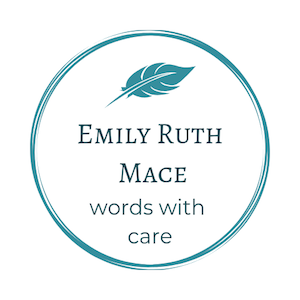Managing a suite of digital humanities projects is a lot like developmental editing, as I’ve found over the past four years as coordinator of a major digital humanities grant.
My job was to successfully manage an $800,000 grant from the Mellon Foundation, in collaboration with the project director, project archivist, and our faculty fellows (whose projects became the crux of the grant). Each year, we selected four to six faculty to work on specific projects tailored to the grant’s aims. I guided the Fellows’ work, helping shape their ideas into digital humanities projects that were interesting, relevant, and do-able in our short timeframe.
We learned as we went along. Most of the faculty were new to digital approaches to scholarship, and the grant management team had a scattering of digital project management experience, but none of us had formal #DH training.
By the end of the grant, we had developed a workflow for our faculty, based on a few framing questions:
How can a digital project bring a fresh approach to your research topic? What information can digital tools present that text-based approaches cannot offer?
— digital humanities and developmental editing framing questions
From there, we asked our faculty more questions to help them refine their projects:
- We imagined visitors to the site as anyone from the general public to fellow specialists in a topic. Based on that audience, we asked what tools would give visitors and users the necessary type of information? Where did we need to look to find that information?
- Since the faculty needed to complete their projects within a specific timeframe, what research questions would sidetrack the work? What research questions would keep it focused?
- Next, we asked what resources we needed to consult in order to (for example) populate a map with information? Possible sources included the Internet, newspapers, police records, county court deed information, historical phone books, snowball interviews, etc.
- Finally, which of the various available digital tools would present their research most accurately? And, thinking like a developmental editor, we asked, how could we structure your project’s (website-based) pages to best present your information?
In some cases, the answers were obvious to the faculty member in question. The projects emerged out of their research interests, after all, and they knew where to go to find what they needed. In other cases, it helped to have an outside to reign in the project or to suggest new sources of information. Many faculty accidentally uncovered a new potential book project. As a response, I reminded them it was okay to stay within the scope of a one-year digital humanities project at a small college! “Don’t bite off more than you need to chew,” I’d say. Keeping scope in mind takes weight off one’s shoulders.
But how did this digital humanities work resemble developmental editing?
My work as a digital humanities “developmental editor” involved guiding our faculty fellows’ expectations of what a project of this scale could accomplish. We wouldn’t, for example, be able to map multi-year trends in major cities across the U.S. (not without a fleet of graduate students, for example, a resource we didn’t have at the small college level). However, we could accomplish a more streamlined project focused on the city of Chicago and answering particular questions about its history.
I also brought my coaching skills into play. I guided expectations, encouraged a positive attitude, and kept the faculty focused on the end-game of a finished project. In my responses, I presented my points with care, recognizing that these were the faculty’s projects, not mine. I lost count of how many times I said, “save that for the monograph; just do what needs to be done to fit the scope of this project.” I kept my eye on the ball, wherever it went. My goal was always to help the project become the best it could be, within our scope and timeframe, and that’s how I’ll approach your projects, as well.
An example of developmental editing:
Recently, I assisted a humanities professor with a partial draft of a new book manuscript. The chapters felt disorganized in terms of following a broader point. In my comments, I pointed out several key themes or points that were only implicit in the chapters as written. I suggested that making those themes more explicit, and that discussing them in his introduction could help give the manuscript better structure and organization. I also noticed where his writing style changed from section to section as he worked to adapt to writing for a different audience. Finally, we restructured necessary sections of his work in order to present the big picture.
Project management, whether for digital humanities work or for developmental editing of written work, is a very translatable process. Both involve making sure the work as it’s currently presented matches the desired outcome in style, tone, scope, and language. In both cases, we’ll work together as a team to present your work in the best form possible. Both work best when I treat your words and your work with care.
I look forward to finding out what you’re working on, and how I can help facilitate your project. Read more here about my editing philosophies, or contact me to discuss your work!



